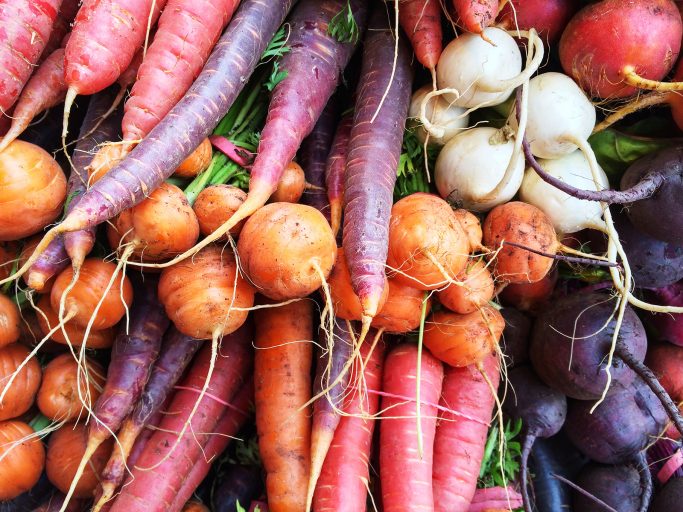Root crops like potatoes, rutabagas, and turnips are probably the reason humanity has survived into the 21st Century.
Before there were cultivated roots, humans dug, stored, and ate roots, notably the roots of lilies like Trout Lily and daylilies. In the case of the latter, all parts of the plant are edible. Cooked with the roots of wild carrot, more commonly known by its flower as Queen Anne’s Lace, the dish would reportedly inspire even modern cooks. Add wild leeks, or alliums, for an even more unique flavor treat!

When these various roots were domesticated, and regularly harvested, they were sometimes referred to as “keeping vegetables”. Dug before, or during, winter and stored in cool cellars, these crops were sometimes the only thing that prevented starvation. The Irish Potato Famine is a perfect example. Beginning in 1845, blight wiped out the potato crop – the mainstay diet of the poor. By 1851, Ireland’s population had been reduced by about three million; one million dead and two million immigrated to America.
Storage life for root crops varies. The hardest roots, turnips, rutabagas and carrots, can last all winter if properly stored, and provided a lifeline for America’s settlers. In fact, Scots-Irish settlers brought with them a traditional dish, “neeps and tatties”, that combines cooked rutabagas and potatoes for a zesty, satisfying winter meal.
For modern American tastes, we suggest Deanna’s Potatoes Deluxe, which combines potatoes, a “comfort food” with the combined flavors of onion, sour cream, and cheddar cheese. Not merely delicious, but warming inside and out!
Though there are distinct differences between roots, tubers and corms, it isn’t necessary to know them in order to appreciate some of Arizona’s most flavorful root crops. The sharp winter frosts and cool growing conditions combined with strong winter sun produce some of the sweetest carrots and parsnips in the nation.
A note from experienced chefs: if you are going to use your root vegetables within a few days, do not refrigerate them. This alters the sugar/starch balance and may ruin the sweetness you have come to expect. Further advice includes buying root vegetables with some green leaves or stalks attached, to determine freshness. If you can’t find carrots with tops, judge the weight of the bundle (or individual tuber) in the palm of your hand. Lighter means the root is already drying out – never a good sign.
Some roots tend to retain their flavor even when cooked for hours, as in soups or stews. Parsnips, celeriac, carrots, beets, and turnips are examples. Milder root crops – potatoes, for example – are better served as a side.
Today’s potato varieties include the “Russet” (or Idaho, which is more brown than red), white, and “Red Rose”, a truly red potato. Russets are low-starch and make wonderfully crisp, homemade French fries. White and red are good halved or sliced and baked, providing all the starchiness humans crave in winter. For more potato recipes, visit Fill Your Plate’s recipe section.
While there, be sure to check out local growers, from Chino Valley to Eloy, or area farmer’s markets, for the very freshest, sun-ripened Arizona produce. Mortimer Family Farms in Dewey, for example, offers everything from farm-fresh beef to on-site, homemade pies, salads, sandwiches and wraps, as well as a variety of fresh produce in season. Take a field trip, or visit their seasonal pumpkin patch and corn maze. Mortimer’s even has a nursery and landscape division!
Another good choice when buying potatoes is Pinto Creek. A family-owned business in Queen Creek, the farm grows red and gold potatoes and sells, direct from the farm, in 50-pound lots. Available from May through June, and disappearing like the proverbial hotcakes, buy a bag and split it with friends and relatives for enough potato salad to last the summer!
Related articles
- Don’t Miss Out on the Root Vegetable Renaissance (fillyourplate.org)
- 9 Foods to Help You Lose Weight (fillyourplate.org)
- 50 Creative Ways to Use Carrots (fillyourplate.org)

